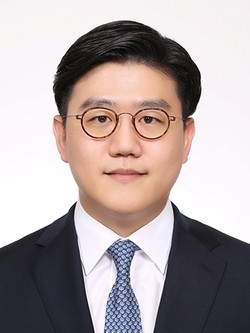Researchers at the Korea Institute of Science and Technology (KIST) have developed a new ultrasound surgery technology that can break up biological tissues precisely and finely using variable pressure-focused ultrasound.

According to KIST, attempts to replace the existing surgical operation using various ultrasound effects with non-invasive properties are active.
Notably, focused ultrasound-based biotissue shredding technology is in the spotlight, as it can physically destroy surrounding living tissue as if it were cut with a knife using powerful bubbles (generated in a short time of about 1/100 of a second, the institute said.
This technology can monitor the treatment process through real-time cavitation analysis and shorten the treatment time compared to the conventional high intensity focused ultrasound (HIFU) method, which burns tissues with heat, it added.
While existing focused ultrasound surgery technology has the advantage of breaking up living tissue physically, it was difficult to use the method when doctors have to remove tissues or tumors located close to major organs and blood vessels due to the low precision due to the shock wave scattering effect.
To resolve this issue, the team, led by Doctor Park Ki-joo of the Bionics Research Center at KIST, devised a method to change the acoustic pressure intensity at the ultrasonic focus.
“We decided to use this method after finding that if we change the focus acoustic pressure intensity instantaneously after generating the bubble at the ultrasonic focus, we could control the movement of the bubble without the effect of shock wave scattering, thereby enabling more precise shredding of living tissue,” the team said.
The researchers also verified the feasibility through acoustic simulation, high-speed camera-based human tissue simulation, and animal experiments.
As a result, they confirmed that it was possible to control and adjust the focus acoustic pressure intensity to generate water vapor bubbles with a size of tens to hundreds of microns at the ultrasonic focus without the effect of shock wave scattering and make the bubbles sustainable for a certain period.
In an animal experiment, the team also observed that the ultrasonic focus could finely crush biological tissues in units of tens to hundreds of μm, which is much more precise than the existing focused ultrasound technology.
“The ultrasonic technology developed this time is a new technology that can precisely crush tissues by controlling the size and duration of air bubbles,” Doctor Park said. “It not only compensates for the low precision caused by the shock wave scattering effect, the biggest drawback of the existing focused ultrasound technology but also enables control of the crushing range and strength through bubble movement and duration control.”
Based on the results, the team expects it to select and disrupt only specific cells of interest or expand the application to decellularization-based cell transplantation research.
Park explained that his team has completed patent applications for the relevant core ultrasound technology in Korea and the U.S. and is conducting follow-up research to commercialize a handheld ultrasound medical device that can perform precision surgery and procedures.
Ultrasonics Sonochemistry has published the study result in its latest issue.

